Knit Stitch: How To Knit Illustrated
Learn how to knit the knit stitch with this informative post. The basic knit stitch along with the purl stitch, which is the reverse of the knit stitch, are the cornerstone stitches in knitting and comprise every knit pattern. Master these two stitches and you can knit anything! Still photos, written directions, and a video explain every step of this basic knit stitch.
This post on the Knit Stitch is the fourth in the series of How to Knit. I encourage you to read all the ones beforehand, but at minimum, you must know how to cast on.
What does it mean ‘To Knit?’
transitive verb: to form by interlacing yarn or thread in a series of connected loops with needles.
And it probably won’t surprise you that the knit stitch is the basis of the craft or skill known as knitting.
So, you have your stitches cast onto your needle…now what? Before we dive in, let’s go over some basic vocabulary.
Terms to Know When Knitting the Knit Stitch
I know you are chomping at the bit to get knitting, but take a few minutes to review some of the common terms and abbreviations used in knitting. You will see these terms and abbreviations in every knit pattern you come across.
Cast on Row (abbreviated co)
The cast on row is the row of stitches you put on one of your needles. Your pattern will tell you how many stitches to cast on. The cast on row DOES NOT count as a row of knitting. Pop on over here to learn about Casting On.
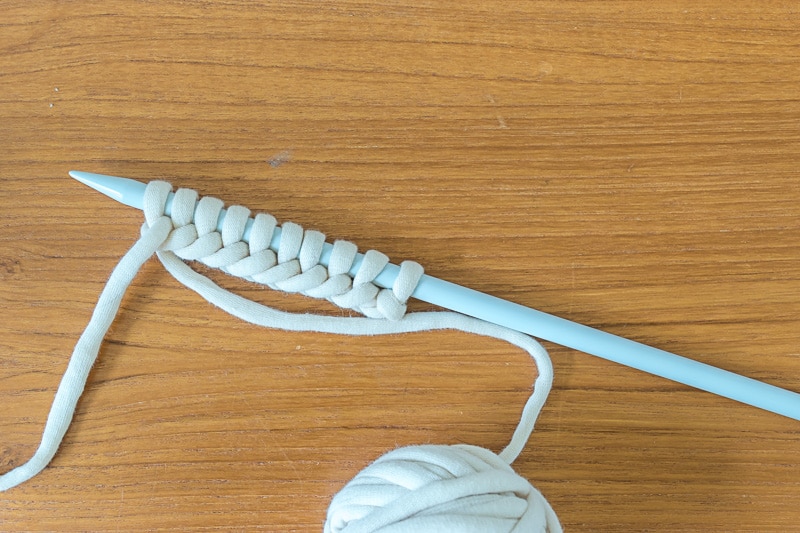
Table of Contents
Stitches (abbreviated st(s))
The individual stitch made by pulling yarn through a previously made stitch.
Working Yarn v Tail End
Your yarn will have two ends; the one that is balled is the working end. The end opposite the ball of yarn is the tail end.
Tension
Knitting tension is how tightly or loosely you pull your stitches when knitting. I am a tight knitter, some are looser knitters.
Beginning knitters often pull the yarn much too tight, making it difficult to knit the next row as it’s difficult to slide the stitches up and down the needle. Additionally, it is also hard to get the point of the needle into a stitch. Knitting too tightly will also affect how the finished project looks: it will not lay flat and will most likely be smaller than you want.
Loose knitters produce a loose and saggy fabric. Like Goldilocks, you don’t want your tension to be too tight or too loose; but at minimum, you need to keep your tension consistent throughout your work.
Knit Stitch (abbreviated k)
Along with the Purl Stitch, the Knit Stitch is the basic stitch to know when knitting. The finished knit stitch will look like a V and is made by pulling the yarn from the back of the needles through a previously made stitch. When you turn a knit stitch over, it will be a purl stitch on the other side of the fabric.
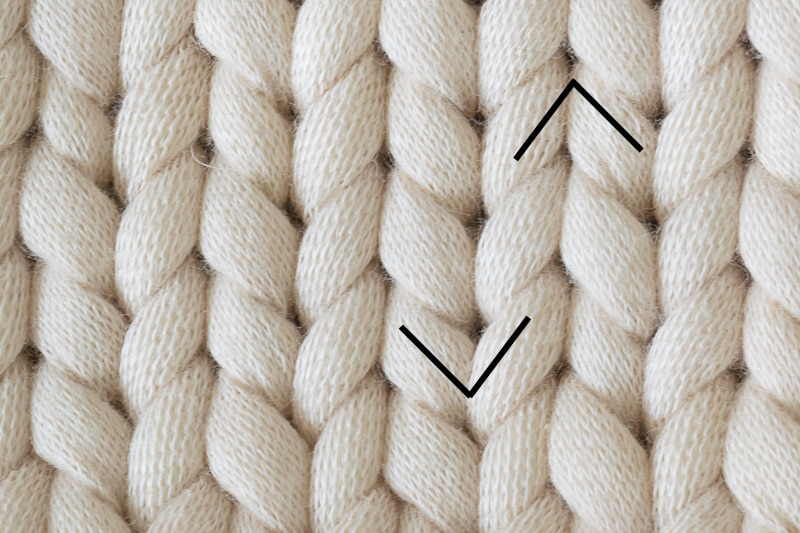
Purl Stitch (abbreviated p)
Along with the Knit Stitch, the Purl Stitch is the basic stitch to know when knitting. The finished purl stitch will look like a bump, pearl, or small horizontal row and is made by pulling the yarn from the front of the needles through a previously made stitch. When you turn a purl stitch over, it will be a knit stitch on the other side of the fabric.

Important to Know
In essence, the Knit Stitch and the Purl Stitch are the same stitches, just the front and back of the stitch. When you are knitting, the V will be facing you and the purl bump will be in the back. When you are purling, the purl bump will be facing you and the V will be in the back.
How to Knit the Knit Stitch, Step-by-Step
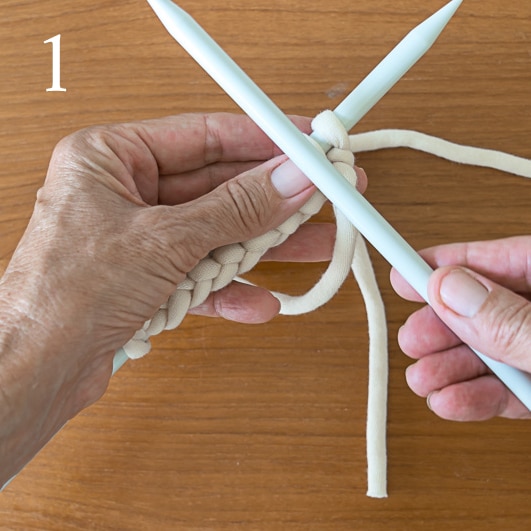
Hold the needle with cast-on stitches in your left hand, the empty needle in your right, and the working yarn in the back.
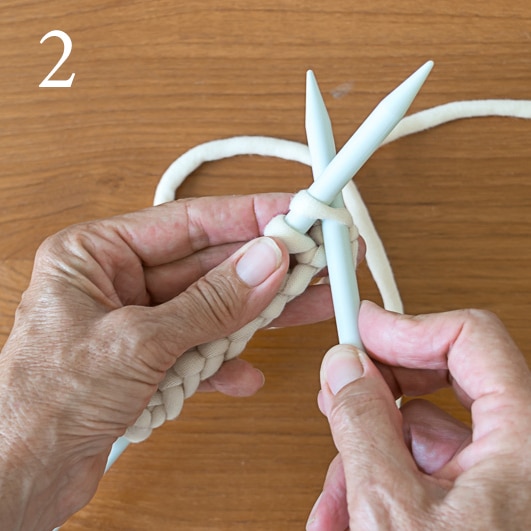
Take your right needle and come from bottom to the top and left to right, and
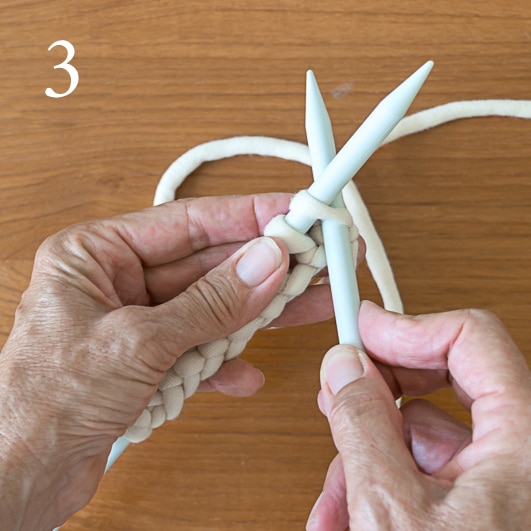
place it in the loop between the yarn and the needle of the first stitch, under the left needle.
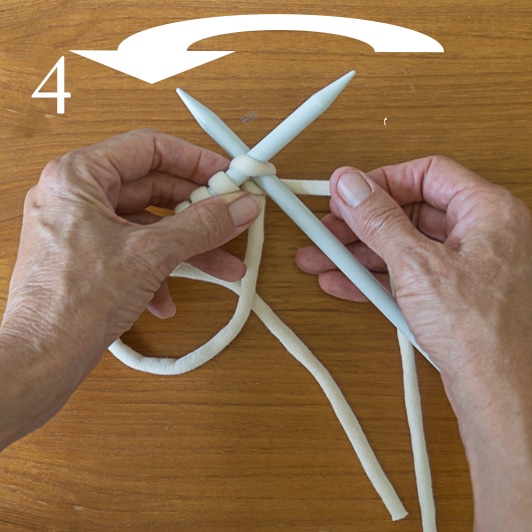
Grab working yarn with your right hand and move counter-clockwise behind both needles.
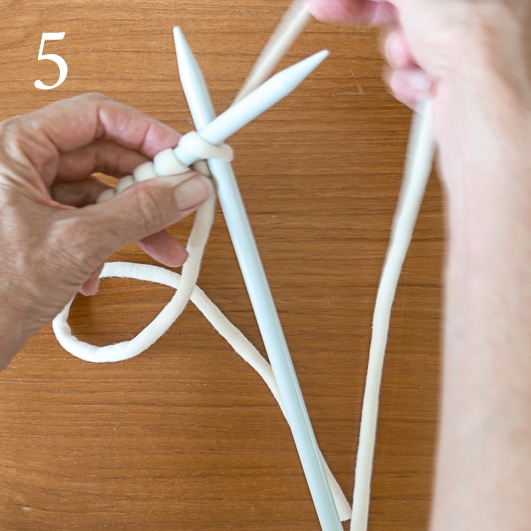
With your right hand, bring the yarn between the two needles
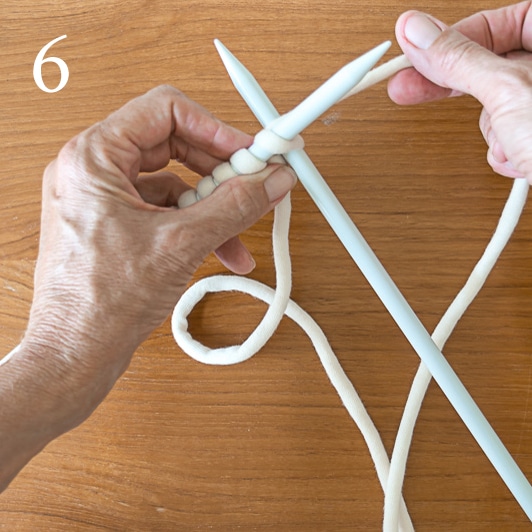
The First Steps of the Knit Stitch in Action
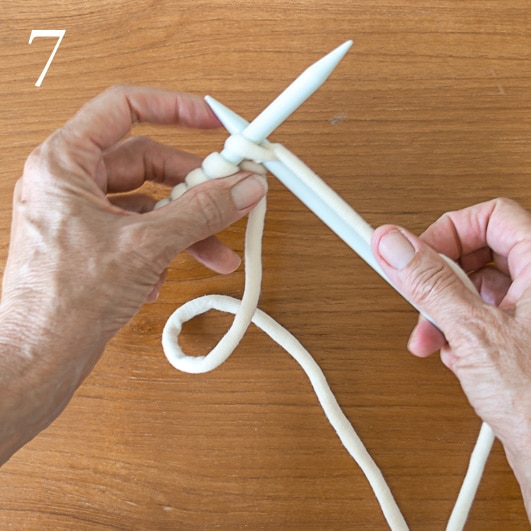
With your right hand, pull the working yarn down gently,
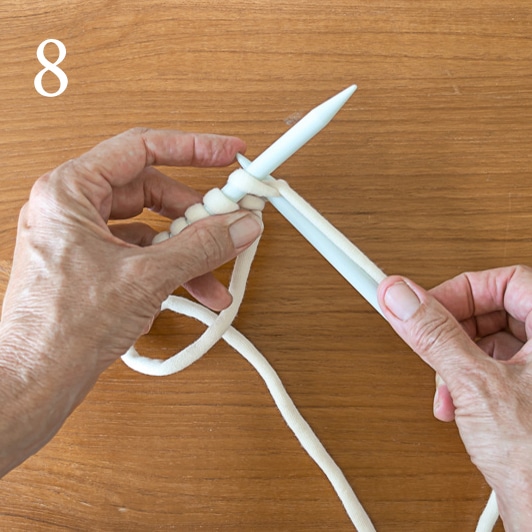
at the same time, use your left-hand pointer finger to push the right needle down gently.
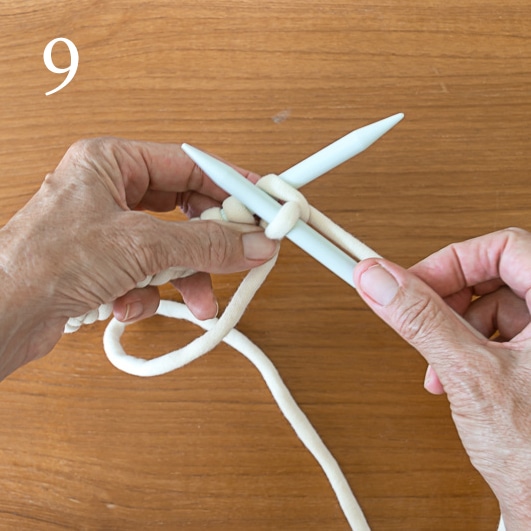
With your right-hand needle, pull out the new stitch you just made
Here’s how these next steps look in action
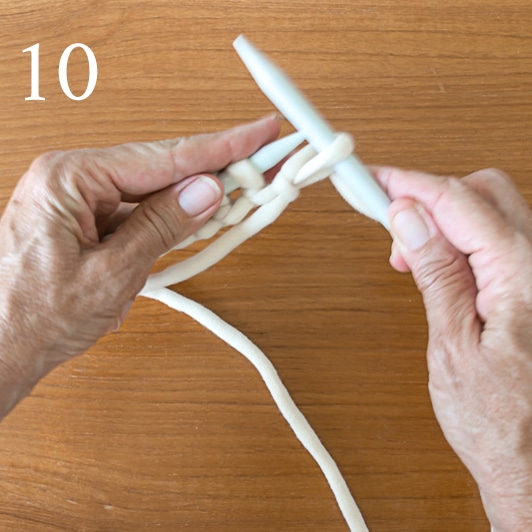
Gently slide the new stitch off of the left needle. Pull both ends of the yarn to snug the stitch.
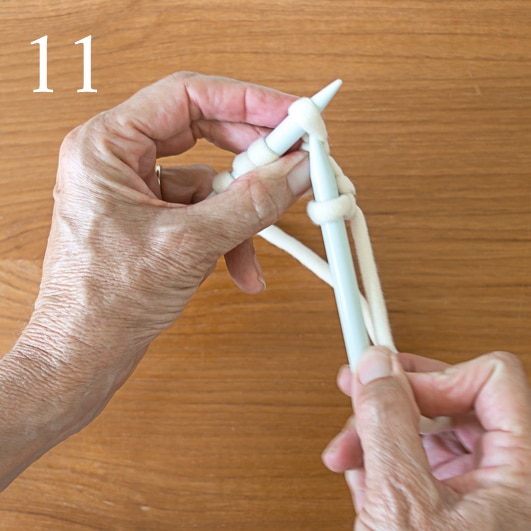
And begin the process on the second stitch!
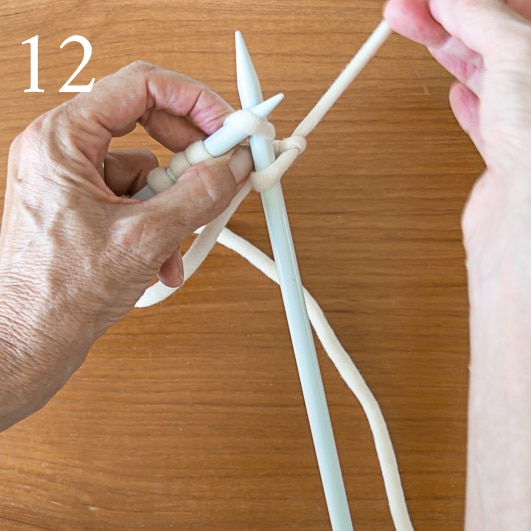
Let’s spend a little more time on image #10. You slide the stitch off of the left needle after you’ve put the new stitch on the right needle. You do this by sliding the left needle stitch to the top of the needle and letting it slip off. If you don’t, you will end up with too many stitches on your needle. But be cautious so that only the one stitch slips off. Watch carefully below.
The Final Steps to make a Knit Stitch
Steps for Knitting the Second Row
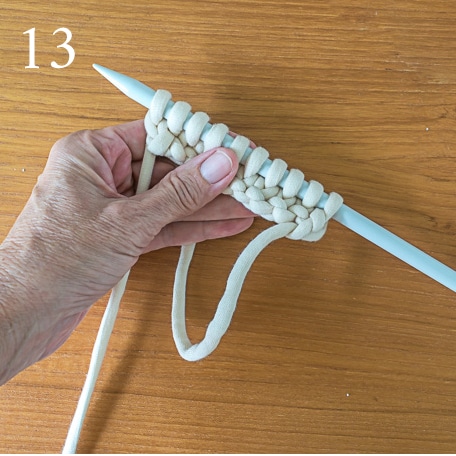
After you have knit your first row, this is what your needle will look like.
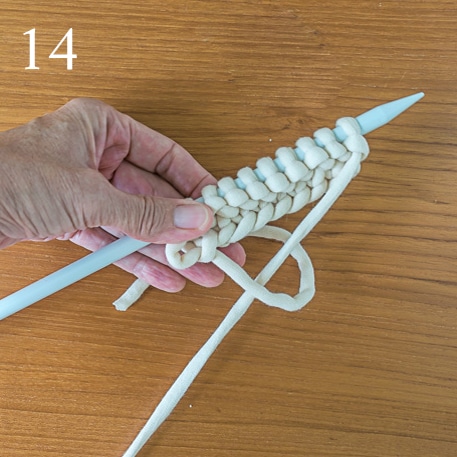
Turn the needle, so the needle is in your left hand and the point is aimed to the right
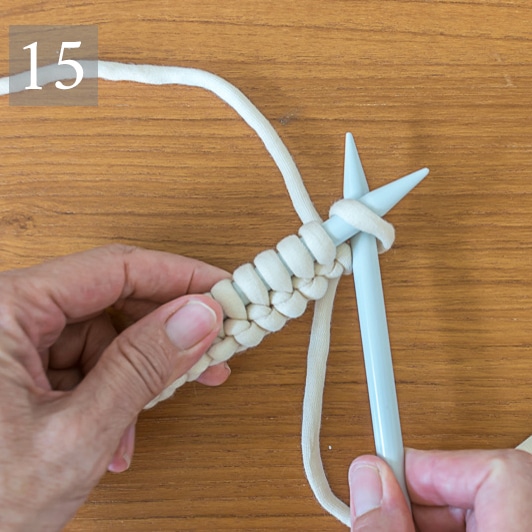
Pick up the empty needle in your right hand and repeat steps 1-12
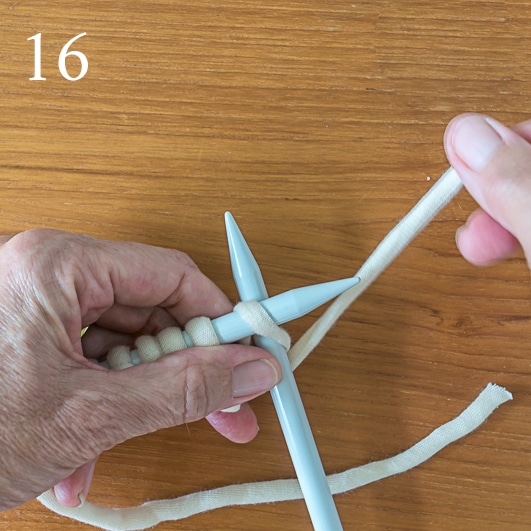
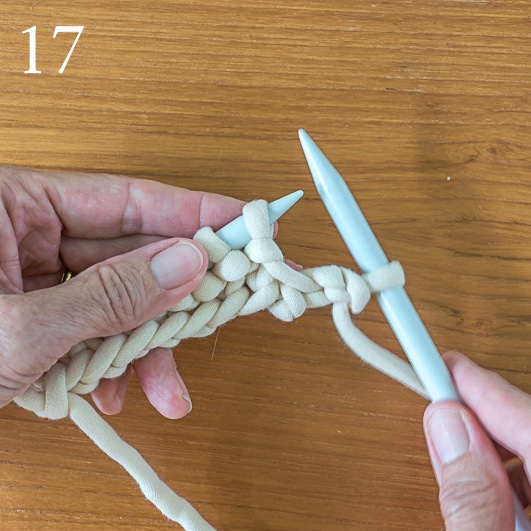
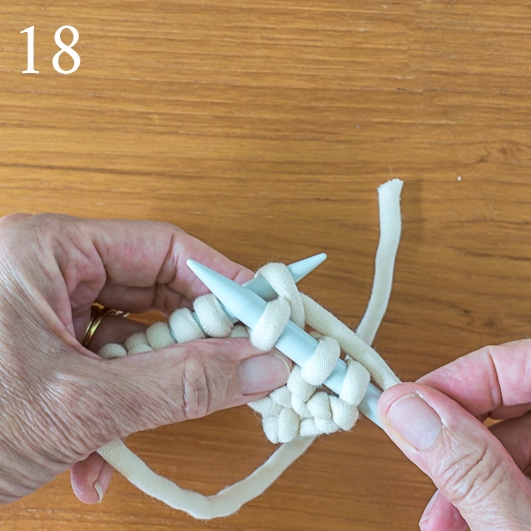
At the end of your second row of knitting, your work will look like this. Continue to work a row, turn the needle and repeat the steps until you are comfortable with your knitting and you are finding a consistent tension.
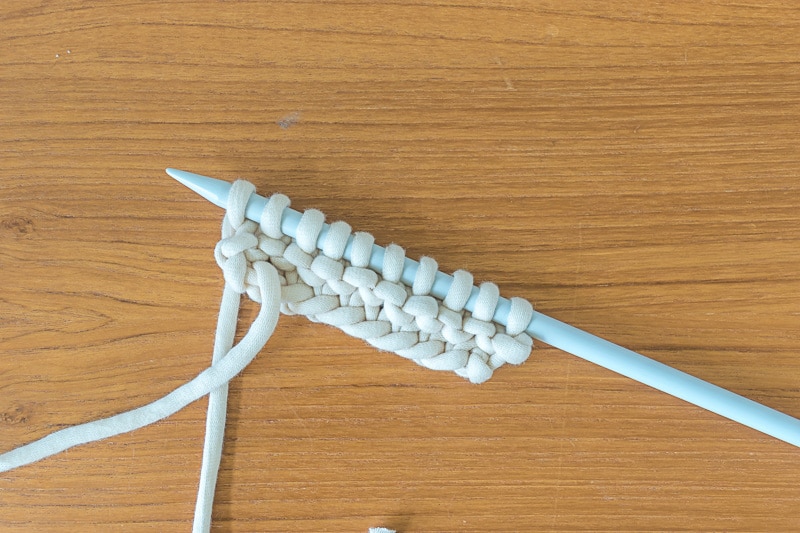
You can see the entire How to Knit the Basic Knit Stitch video, from start to finish on YouTube.
Practice the Knit Stitch with these patterns
Garter Stitch (abbreviated gst)
The Garter Stitch is the pattern made by knitting (or purling) every row.
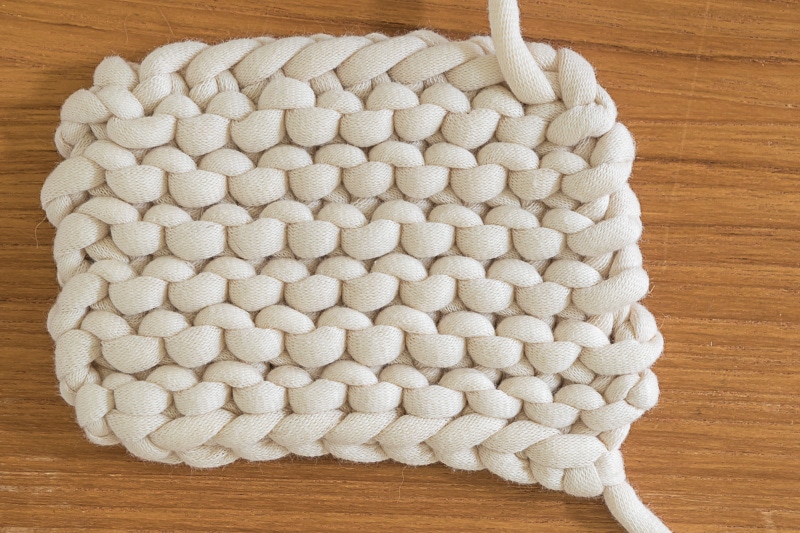
Stocking Stitch or Stockinette Stitch (abbreviated st st)
The Stocking Stitch is the pattern made by alternating knit and purl rows.
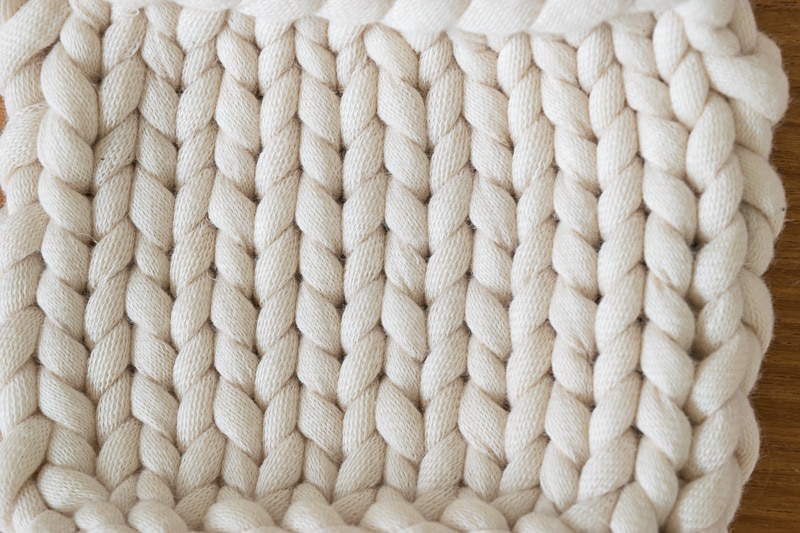
Tips & Hints for Knitting the Knit Stitch
- It is the back side of the purl stitch.
- The working yarn should always be in back when working a knit stitch.
- If you forget what side of your work you are on, if you see the purls then you should be purling and if you see Vs, you should be knitting.
- When pushing your needle through the stitches on your needle, make sure you don’t split the yarn.
- Always count the number of stitches after each row. If you have more than the number your cast on, you added some somewhere. If you have fewer, you either dropped some or knit some together. It is better to find those sooner rather than later.
- There are several different knitting styles, this post shows how to knit the English or American Style.
- Like any craft, it takes practice to master. Set aside some time to practice casting on and knitting, but don’t get frustrated. Each time you practice a stitch, you will get better.
- I recommend a needle no smaller than a US7/5mm and a suitable yarn weight. If you don’t have them already, make sure to nab the Needle Conversion Chart and the Yarn Weights Guide.
- When you finish each row, all new stitches will be on the right hand needle and the left hand needle will be empty. Turn the right hand needle, place it in your left hand and repeat the process.
- When you begin each new row, the yarn should be on the right side of the stitches on the left hand needle.
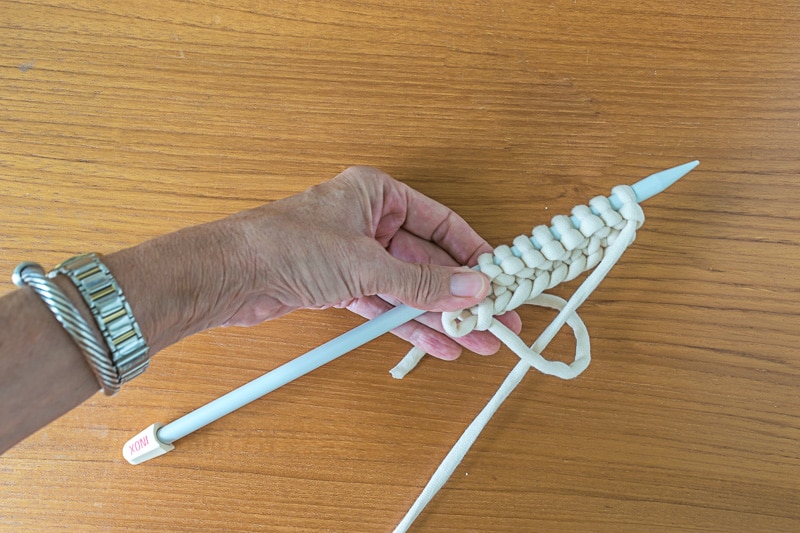
If you want to learn how to knit or are looking to brush up on your knitting skills and knowledge, pop over to the How to Knit page, which houses all of the posts that teach knitting skills. Or, you could go ahead and visit each one by clicking the links below.
All About Knitting
- All About Yarn, including different fibers and weights, how to read a yarn label, and a Yarn Weights Chart
- All About Knitting Needles, including material, sizes, styles, and a Needle Conversion Chart.
- How to Cast On Using the Long-Tail Method, including calculating how much yarn is needed to cast on and how to make a slip knot.
- How to Knit the Knit Stitch
- How to Knit the Purl Stitch
- How to Knit the Seed Stitch
- How to Bind Off, including how to weave in your loose ends.
- How to Read a Knit Pattern, including a Common Knitting Abbreviations Chart.
- This simple Garter Knit Dishcloth will let you put all your new skills to good use!
- How to Block Your Knitting.
- Common Knit Errors; How to Prevent or Diagnose and Fix Them
- Join yarn using the Russian Join
- How to seam pieces of knit fabric with the Mattress Stitch (for sweaters, tops, pillows, etc…)
- How to Knit in the Round with Circular Needles
- How to Knit in the Round with Double-Pointed Needles
- How to Knit in the Round using the Magic Loop Technique.
- Organize Your Knitting with these free printables.
- Check out our Gift Ideas for Knitters.
To refer back to this post on the basic knit stitch, bookmark this page or pin the following image.
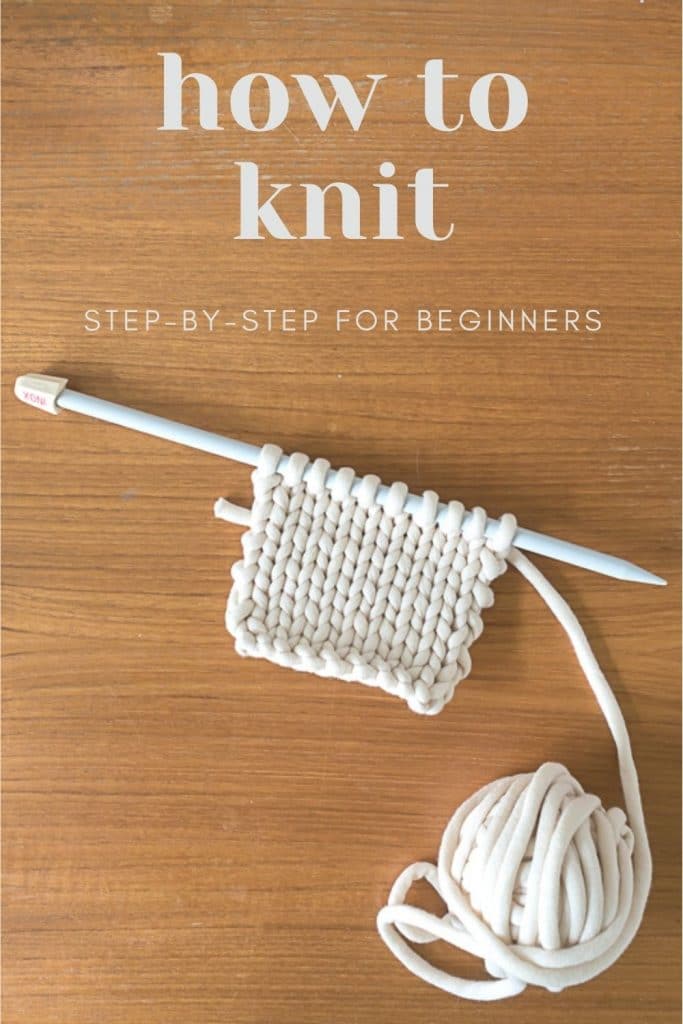
Thanks so much for spending a few minutes of your busy day with me!
To ensure you don’t miss future content, pop your email in the pale green box on the right or click here. I usually send one email weekly, so I won’t inundate your inbox. I’m sensitive to an overflowing email inbox!
We will only use your email address to send you emails, no more than 1-2 weekly. In addition, you will have access to my growing library of knit & crochet patterns and other printables. Check back often as this library will continue to grow. You can unsubscribe anytime by emailing me or clicking on the “unsubscribe” link at the bottom of all emails.
And you can access many of the products I refer to on my Nourish and Nestle Amazon Page. You can access it here.
So, if you’d like to participate in the ‘subscriber benefit’ action, simply subscribe to Nourish and Nestle here or use the form on the right sidebar. It’s slightly towards the top.
I have sent all my subscribers the link to the Subscriber Benefits Library. If you missed it or misplaced it, let me know.
Until next time…



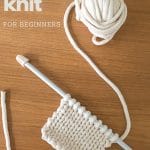
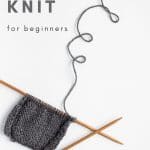
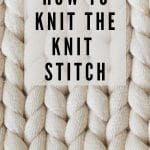
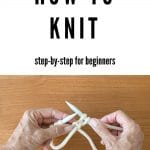

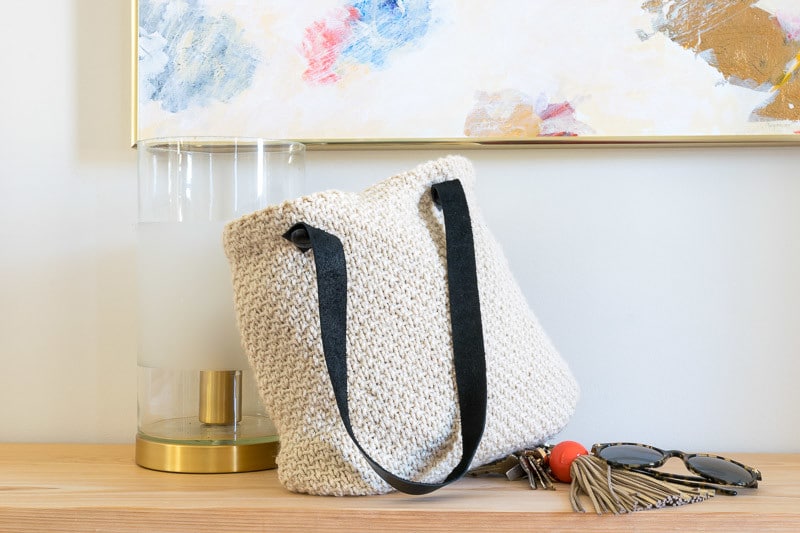
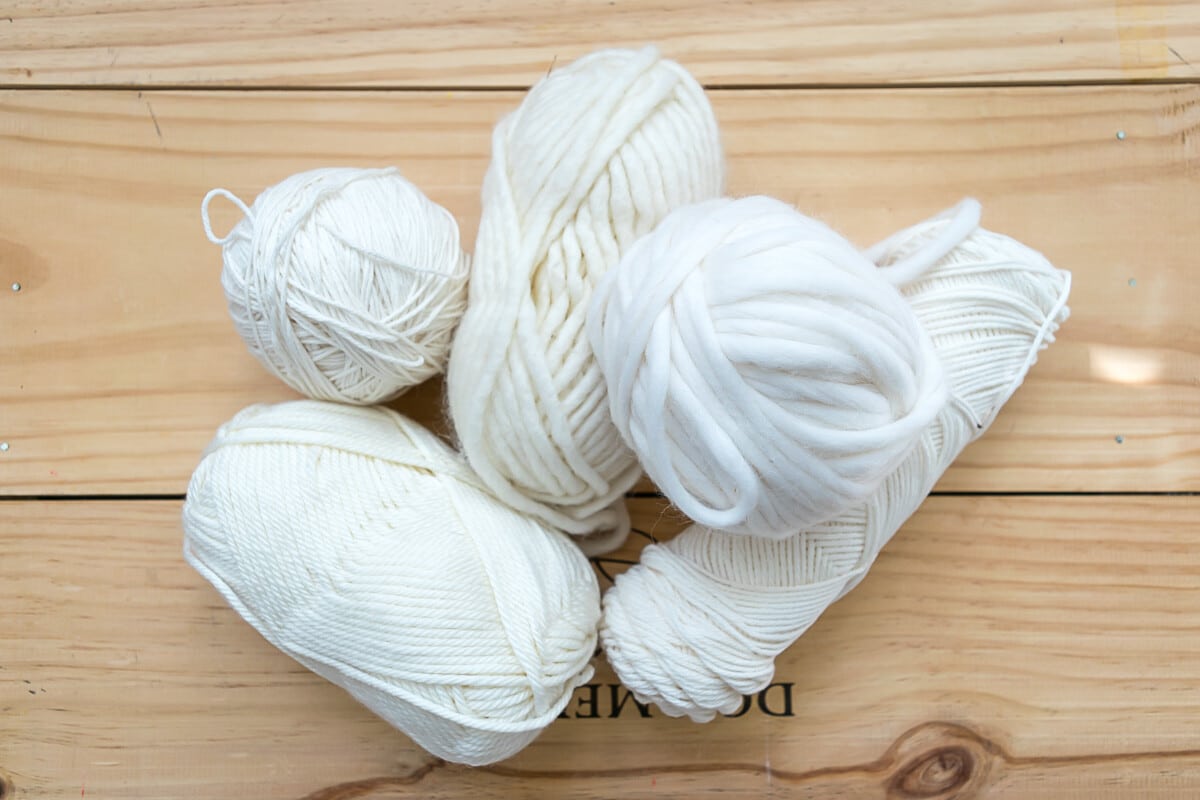

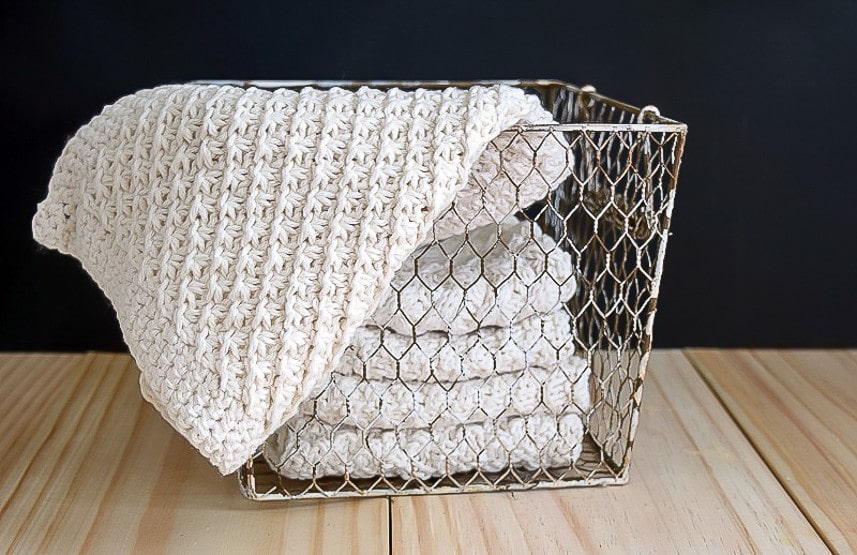
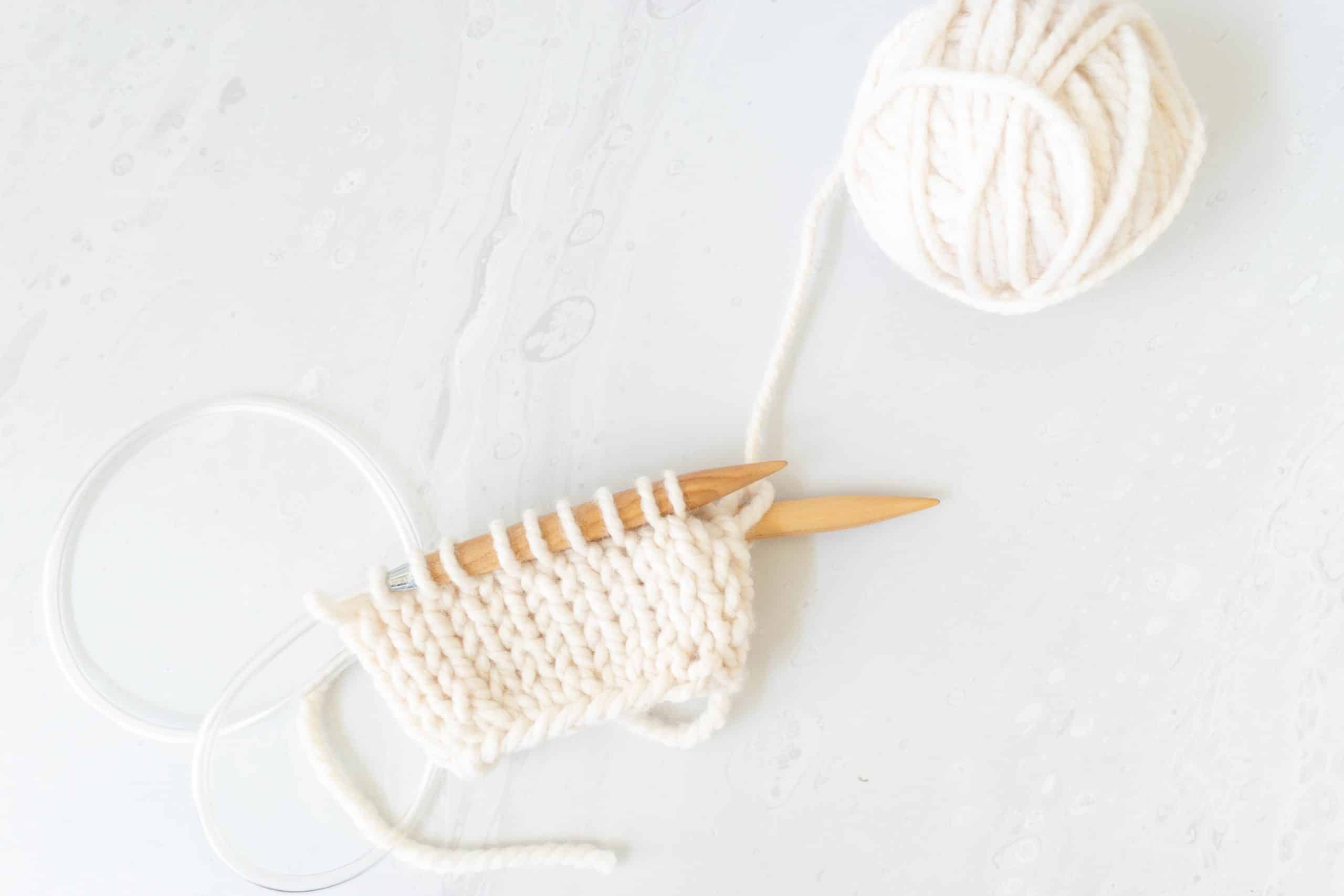
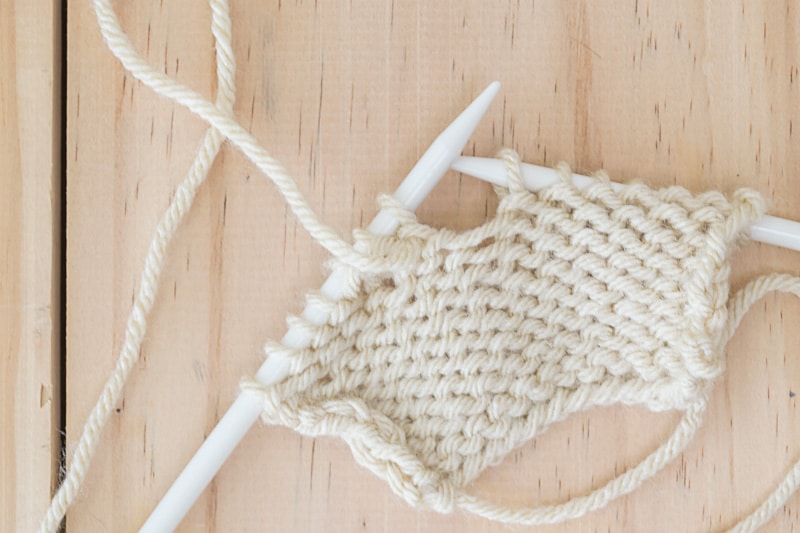
Thanks for making this amazing guide, Lynn! I’ve got friends who want to learn to knit – I’m going to share this with them! You’re amazing. 🙂
Your illustrated knit stitches are great. However, if you can make another series of pictures knitting the continental way I think you will start new knitter on a much faster way to knit. I saw a Youtube illustration named something like “Knitting, closed hand” holding the yarn and fingers very close to the work.
https://www.youtube.com/watch?v=q92bAeVFdao
Here is another demonstration. I have made the knit stitches this fast way for over 80 years! I do purl differently but will try this method soon.
https://www.youtube.com/watch?v=SL2R467DSJo
Oh Tove,
You’ve laid down a challenge! I learned to knit the slower, less efficient English-style of knitting and am much too impatient to learn Continental. My problem is that I know there will be a learning curve, which will slow down my knit project and I’ve never been in a position to slow down. In fact, I’m about halfway through a sweater for my mom that is supposed to be a Mother’s Day gift for her…4 days from now! Seems I’m alwasy pushing the clock on my projects.
But, it is always something I say to myself…’you need to knit continental style’…so we will see. Thanks for the challenge and have a great day!
Hugs, Lynn